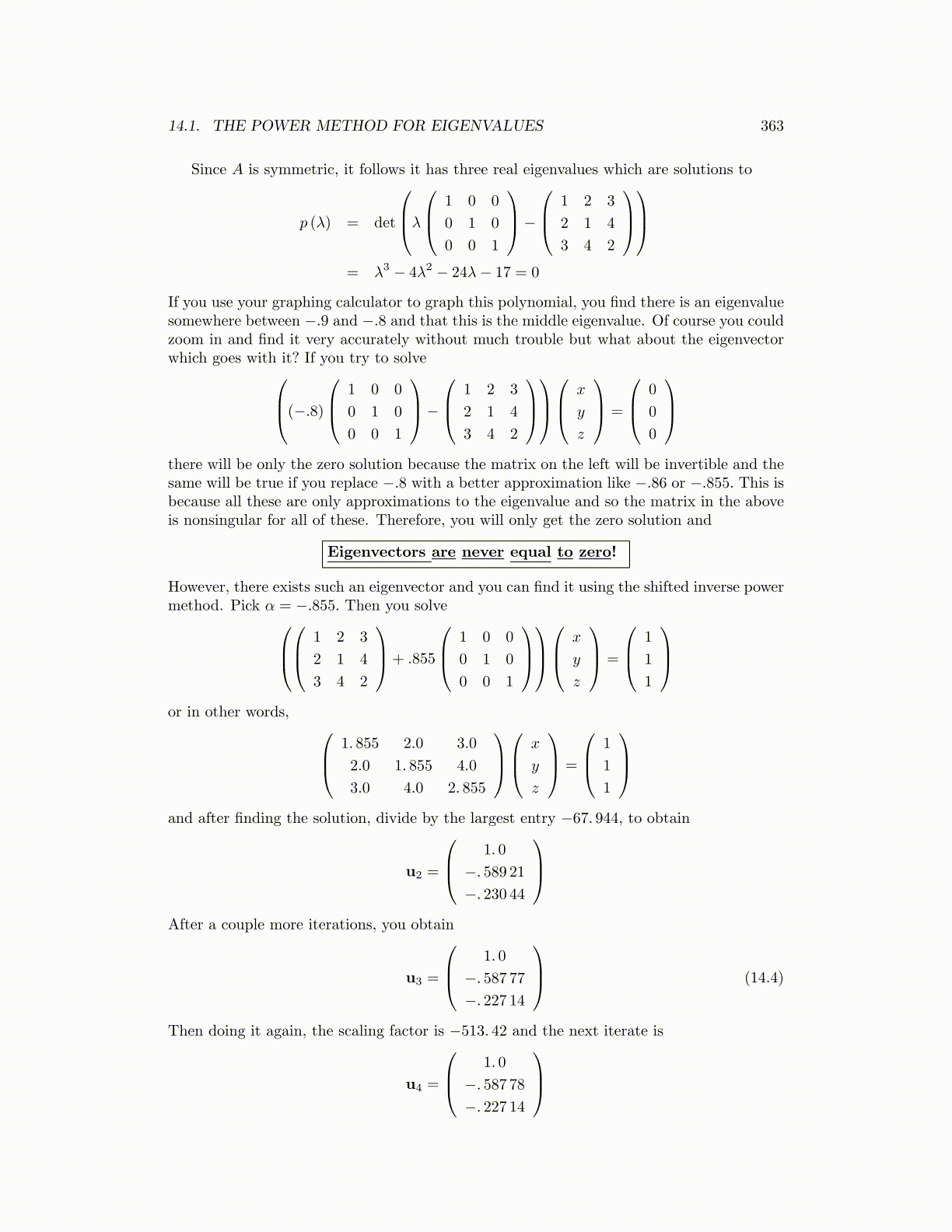
14.1. THE POWER METHOD FOR EIGENVALUES 363
Since A is symmetric, it follows it has three real eigenvalues which are solutions to
p (λ) = det
λ 1 0 0
0 1 0
0 0 1
−
1 2 3
2 1 4
3 4 2
= λ3 − 4λ2 − 24λ− 17 = 0
If you use your graphing calculator to graph this polynomial, you find there is an eigenvaluesomewhere between −.9 and −.8 and that this is the middle eigenvalue. Of course you couldzoom in and find it very accurately without much trouble but what about the eigenvectorwhich goes with it? If you try to solve(−.8)
1 0 0
0 1 0
0 0 1
−
1 2 3
2 1 4
3 4 2
x
y
z
=
0
0
0
there will be only the zero solution because the matrix on the left will be invertible and thesame will be true if you replace −.8 with a better approximation like −.86 or −.855. This isbecause all these are only approximations to the eigenvalue and so the matrix in the aboveis nonsingular for all of these. Therefore, you will only get the zero solution and
Eigenvectors are never equal to zero!
However, there exists such an eigenvector and you can find it using the shifted inverse powermethod. Pick α = −.855. Then you solve
1 2 3
2 1 4
3 4 2
+ .855
1 0 0
0 1 0
0 0 1
x
y
z
=
1
1
1
or in other words, 1. 855 2.0 3.0
2.0 1. 855 4.0
3.0 4.0 2. 855
x
y
z
=
1
1
1
and after finding the solution, divide by the largest entry −67. 944, to obtain
u2 =
1. 0
−. 589 21−. 230 44
After a couple more iterations, you obtain
u3 =
1. 0
−. 587 77−. 227 14
(14.4)
Then doing it again, the scaling factor is −513. 42 and the next iterate is
u4 =
1. 0
−. 587 78−. 227 14